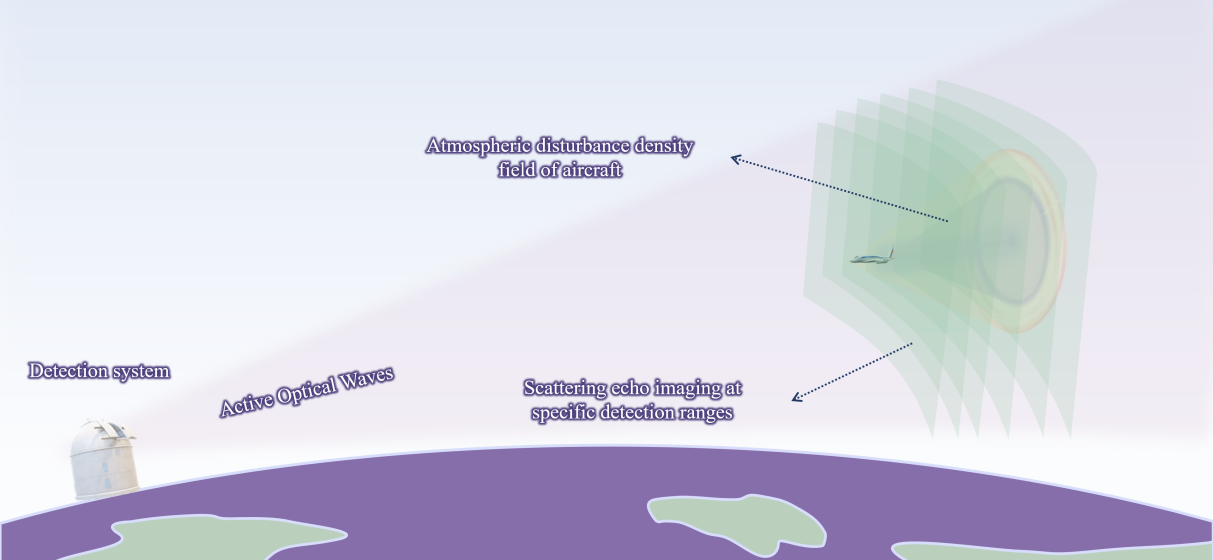
Recently, the research team led by Professor CUI Wenyu from Hefei Institutes of Physical Science of the Chinese Academy of Sciences (CAS), in collaboration with the research groups from Institute of Mechanics, CAS, specifically advances the simulation of optical scattering imaging from disturbed density fields and the analysis of signal characteristics.
"When a high-speed aircraft flies through the sky, it leaves behind invisible ripples in the air,” explained Prof. CUI, "and our method is to detect these atmospheric disturbances.”
The results have been published in the Chinese Journal of Aeronautics.
Atmospheric disturbance fields caused by high-speed aircraft are complex, unsteady phenomena that affect flight performance. Due to their wide influence and detectable nature, they offer great potential for indirect remote sensing.
In this study, the team proposed a novel approach: using active light sources to remotely detect the density field characteristics of atmospheric disturbances—thereby enabling long-range sensing of aircraft presence.
They designed a 3D optical tomography system to capture scattered light signals from disturbed regions. Based on fluid dynamics simulations, they built a model of the aircraft-induced density field and developed a framework to simulate scattering echo images.
To validate this concept, the team constructed a spatial distribution model of the aircraft-induced density field, along with a simulation framework for scattered light echo imaging. Based on this, they simulated ground-based observations of scattering echoes over distances exceeding 100 kilometers.
To extract useful information from these signals, the researchers also developed a signal extraction method. They conducted a detailed analysis of the relationship between optical signal strength and spatial detection resolution, revealing the principles governing the transformation of density field features into detectable optical signatures.
The results demonstrate that this detection scheme can theoretically capture sharp spatial variations in atmospheric density within disturbed regions, thus verifying the feasibility of long-range optical detection of aircraft-induced atmospheric disturbance fields.

Schematic illustration of detection principle based on atmospheric disturbance density field. (Image by CUI Wenyu)